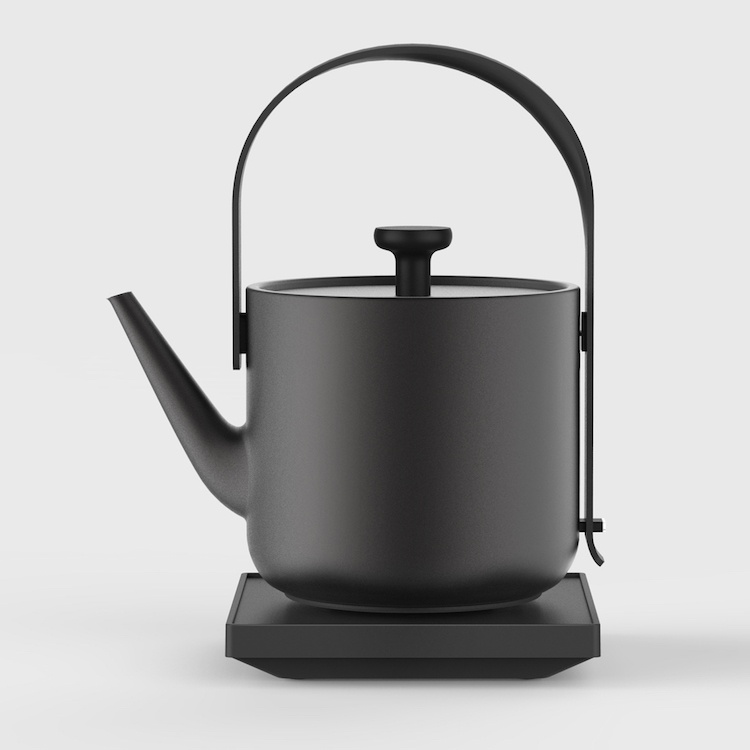Design students create electrifying contemporaries of the stovetop tea kettle: one draws upon technology to elevate its design, another other leverages innovative design in memoriam of a dying technology, and the last utilizes design as a means of preservation.
Above image: Keren Hu, Teawith kettle
Designed for anywhere other than the kitchen, 2016 Royal College of Art Graduate Keren Hu’s sleek and petite Teawith kettle is smaller than your standard stove-top or electric kettle.
Unlike porcelain, stoneware or cast iron kettles, this appliance features a cylindrical die-cast aluminum body and an arched handle – a design based on traditional oriental teapots. The kettle sits on a square base; simply press down on the handle to turn it on.
Dezeen writes in its 2016 RCA Graduate series, the kettle was developed for the modern dynamic lifestyle.
“[Hu] created the Teawith kettle as a response to the increasingly blurred lines between domestic areas, as well as the high numbers of people inhabiting shared or rented accommodation.”
Hu crowdfunded production of his kettle.
Ecole Nationale supérieure d’Art et de Design de Saint-Etienne 2010 design graduate Estelle Sauvage’s Ipso Facto Kettle takes an Easy Bake Oven approach to warming water for tea. Even so, her design is more of an homage to the demise of its heat source.
Sauvage uses an incandescent lightbulb, which are outlawed in France, mounted onto the kettle’s wooden base. The glass body of the kettle includes a recess to house the bulb, which is capable of warming the water up to 194°F – just below water’s boiling point of 212°F though an ideal temperature for tea, Sauvage tells Denzeen.
From the artist:
“So the revolutionary object finished its life sadly, demonized by the ecology. This project just tries to pay a kind of tribute, staging the bulb, and its death. The kettle becomes out of order, its status of useful object crosses in a fraction of second, an object of memory, a “former” object.”

Anna Czaniecka, Kttle
Kingston University graduate Anna Czaniecka‘s Kttl is shaped like two mugs stacked up on one another so the user can measure exactly how much water is needed for tea. In fact, judicious water use was the catalyst behind Czaniekca’s design, which is unlike traditional kettles.
Czaniecka tells Dezeen three quarters of British households overfill their kettles – wasting a total of £68 million (approximately $84.8m) per year.
“I started this project by looking at kitchen appliances and I came across some data about the unusually high energy usage of a standard electric kettle.”
Dezeen was media partner for the RCA exhibition (London, UK June 26 – July 3, 2016).
Do you love or loathe these works of contemporary design? Let us know in the comments.







Hi, could you please advise where one can purchase a teawith kettle please?
Thankyou